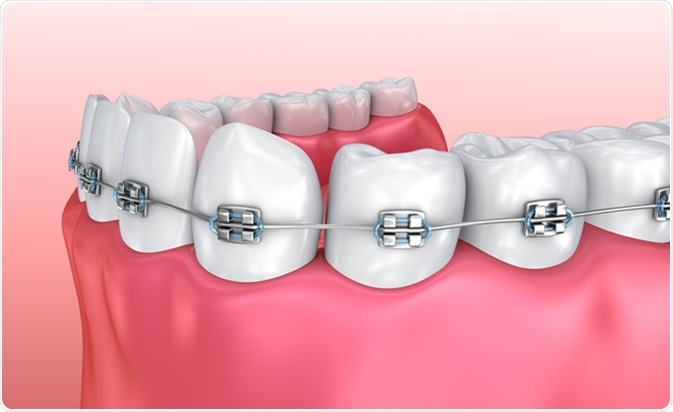Comprehensive Guide to Orthodontics Treatments for Correcting Oral Misalignments
Comprehending the ins and outs of each treatment, including their devices, advantages, and potential drawbacks, is essential in making informed decisions about one's orthodontic treatment. As we navigate with the detailed guide to orthodontic treatments for correcting dental imbalances, the complex information of each approach will unfold, losing light on the path towards a functional and harmonious dental placement.
Orthodontic Procedures Introduction

Normal changes and tracking are important parts of orthodontic therapy to make sure development is on track and to make any required adjustments along the way. By going through orthodontic treatments, people can not just accomplish a straighter smile but additionally boost their overall oral wellness and function.
Standard Dental Braces: Just How They Work
When considering orthodontic treatments for dental misalignments, standard dental braces stand out as a tried and true technique for dealing with teeth positioning. Conventional dental braces are composed of braces, wires, and bands that collaborate to use continual stress on the teeth, slowly moving them into the preferred placement. The braces are connected to the teeth utilizing a special adhesive, and the cords are threaded with the brackets. By adjusting the tension of the cords, orthodontists can control the direction and force related to each tooth, leading them into correct alignment gradually.
One key facet of how standard braces work is the process of bone remodeling. As stress is put on the teeth via the braces, the bone surrounding the teeth is reshaped to support the new tooth settings. This renovation is vital for the long-lasting stability of the remedied alignment. Patients will certainly need normal changes at the orthodontist's office to guarantee the braces remain to use the right stress for reliable teeth movement.
Unseen Aligners: Cons and pros
These clear, custom-made trays are practically unnoticeable when used, making them an appealing option for individuals looking for a more visually pleasing orthodontic therapy. Patients can remove the aligners before consuming or cleaning their teeth, minimizing the threat of food obtaining stuck in the device and simplifying the cleansing process.

Surgical Orthodontic Options
Surgical interventions in orthodontics existing viable choices for dealing with complex oral imbalances that might not be efficiently dealt with with traditional orthodontic therapies. While unseen aligners and typical dental braces can remedy several orthodontic concerns, particular instances call for medical treatment to accomplish optimum outcomes. Surgical orthodontic alternatives are commonly advised for extreme malocclusions, substantial jaw inconsistencies, and situations where the underlying bone structure needs modification to achieve correct placement.
One usual medical orthodontic procedure is orthognathic surgery, which includes repositioning the jaws to correct functional concerns such as problem talking or chewing. This surgery is often executed in cooperation with an orthodontist who helps straighten the teeth prior to and after the procedure. Surgical orthodontics might likewise involve treatments to subject impacted teeth, get rid of excess gum cells, or reshape the jawbone to create an extra harmonious face account.
Before considering surgical orthodontic alternatives, patients undergo a thorough examination to identify the need and prospective advantages of such interventions. cumming orthodontics. While surgical treatment might seem daunting, it can substantially improve both the feature and visual appeals of the smile in situations where traditional orthodontic therapies fall short
Retainers and Post-Treatment Treatment

Post-treatment care involves complying with the view it orthodontist's guidelines vigilantly. This might consist of proper oral health techniques, attending follow-up visits, and putting on the retainers as prescribed. Failure to adhere to post-treatment treatment instructions can result in regression, where the teeth progressively return towards their original settings. Regular retainer wear, good oral hygiene, and routine dental examinations are crucial for maintaining the results accomplished via orthodontic surgical treatment and making certain the long-term stability of the corrected dental alignment.
Conclusion
In conclusion, orthodontic procedures supply numerous alternatives for dealing with oral misalignments. Conventional braces use steel braces and cables to change teeth right into appropriate alignment. Invisible aligners provide an even more very discreet alternative but might not be appropriate for all situations. Surgical orthodontic options are readily available for extra severe misalignments. Retainers are generally made use of post-treatment to preserve the new placement. Generally, orthodontic procedures can successfully improve oral wellness and aesthetic look.
As we browse via the detailed guide to orthodontic procedures for correcting dental imbalances, the elaborate information of additional info each method will certainly unfold, dropping light on the course toward a unified and practical dental placement. - orthodontist
One of the most common orthodontic therapies is the use of dental braces, which are composed of metal brackets and cords that apply gentle stress to progressively shift teeth right into the wanted setting.When taking into consideration orthodontic treatments for dental imbalances, typical braces stand out as a tried and true approach for correcting teeth positioning. Furthermore, unseen aligners may not be suitable for complicated orthodontic concerns that call for more significant teeth motion, as they are normally recommended for mild to moderate situations. Retainers are tailor-made orthodontic tools made to hold teeth in their corrected positions after the completion of orthodontic treatment.